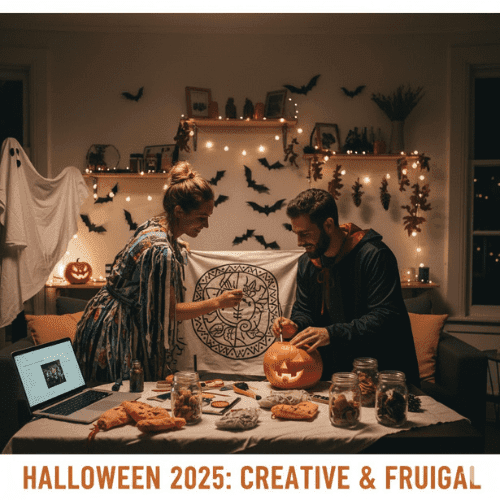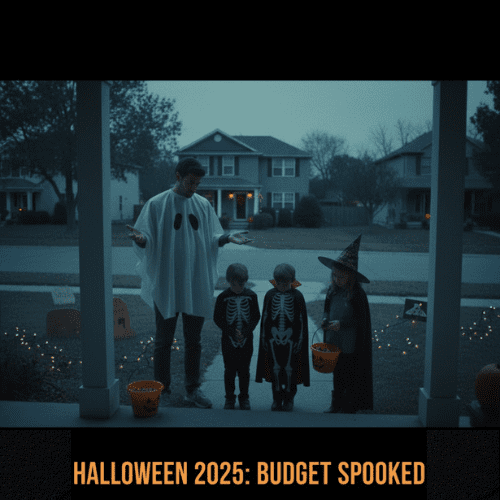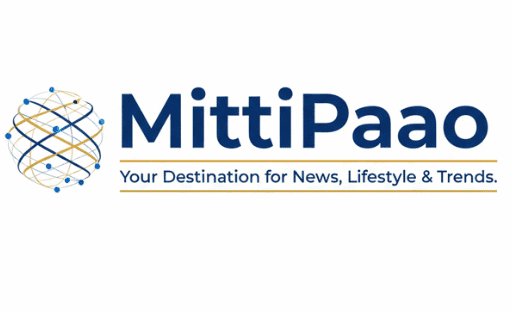Budget-Conscious Halloween: Why Shoppers Prioritized Value in 2025

Halloween 2025 arrived not with a deafening spook, but with the quiet anxiety of the cost-of-living crisis. Nevertheless, while the headline suggests a mood of apathy and widespread opt-outs driven by inflation, the reality for this beloved holiday is a complex tapestry of frugality, early planning, and unflagging cultural resilience. Thus, though spending hit record-breaking overall figures, this masked a major shift in how and when consumers chose to celebrate a Budget-Conscious Halloween. Consequently painting a picture of a spooky season where value was the most sought-after treat.
The Inflationary Creep: Budget Spooks the Consumer
The most significant specter haunting Halloween was, without a doubt, inflation. In addition, key Halloween categories saw marked price increases that outpaced the general consumer price index. For example, reports indicated that candy prices, a cornerstone of the holiday, had surged by over 8% since 2024. Meaning that the average American felt a real-world pinch. Therefore, nearly one-fifth of Americans admitted they were skipping the celebration entirely due to these rising costs, with others aggressively scaling back their budgets. Still, the overall forecast for total Halloween spending hit a record 13.1 billion. Which means that the money was simply reallocated, not eliminated.
Opting for Value: The Rise of the Creative and Frugal
The inflationary environment did not kill the holiday spirit; instead, it forced consumers to get creative. Furthermore, value-conscious shopping emerged as a dominant trend.
- Discount Dominance: To illustrate, discount stores became the primary destination for Halloween essentials. Seeing a 5 percentage point increase in shopper visits compared to the previous year.
- DIY and Re-use: Moreover, there was a noticeable shift toward do-it-yourself (DIY) costumes and décor, particularly among Millennials and Gen Z. In contrast, expensive, single-use costumes saw muted demand. As a result of which shoppers embraced clever repurposing, second-hand finds, and makeup over new purchases.
- Decorations Lead the Charge: Consequently, in a reflection of a desire for durable value, spending on decorations reached an all-time high. Surpassing both costume and candy expenditure. Specifically, consumers were investing in reusable, high-quality items like LED lights and sophisticated lawn ornaments that offered multi-year utility.

The Counter-Narrative: Resilience and Early Investment for a Budget-Conscious Halloween
However, the narrative of ‘apathy’ is misleading when analyzing the most engaged demographic: parents and younger generations. Consequently, for many, Halloween has evolved into a full-season ritual and a prioritized, high-value experience.
- Early Shopping for Security: To emphasize, a significant portion of consumers, particularly Millennials, started their Halloween preparations as early as July or August.6 Thus, this preemptive timeline was a calculated move to mitigate against inventory shortages and, critically, to lock in prices before anticipated seasonal hikes.
- The Experience Economy: In addition, high-spending participants, especially parents, were determined to create lasting memories. Therefore, their spending focused heavily on the experiential, including visits to pumpkin patches, haunted houses, and parties, demonstrating that the holiday’s emotional significance trumped general economic anxiety.
- Gen Z and Millennial Power: Moreover, these younger groups, who are the cultural powerhouses of the holiday, were twice as likely as Baby Boomers to increase their spending. Finally, this sustained enthusiasm ensures that even in an era of constrained budgets, the spookiest holiday of the year remains a formidable force in the retail calendar.
The Halloween of 2025 will be remembered not as a year of apathy, but as a year of adaptation. Hence, while inflation successfully spooked a segment of the population into opting out, the majority responded with savvy, value-driven choices. Conversely, the record-breaking overall spending—fueled by early planning and a decisive shift to durable goods and experiences—proves the holiday’s deeply rooted cultural importance. For this reason, the challenge for retailers is clear: to continue catering to the increasingly value-conscious consumer with creative, affordable, and reusable ways to celebrate the Budget-Conscious Halloween. The enduring desire for the ‘spook-tacular’ remains, only now it must be achieved with a frighteningly smart budget.
Read More Articles Click Here. Read Previous Article Click Here.



